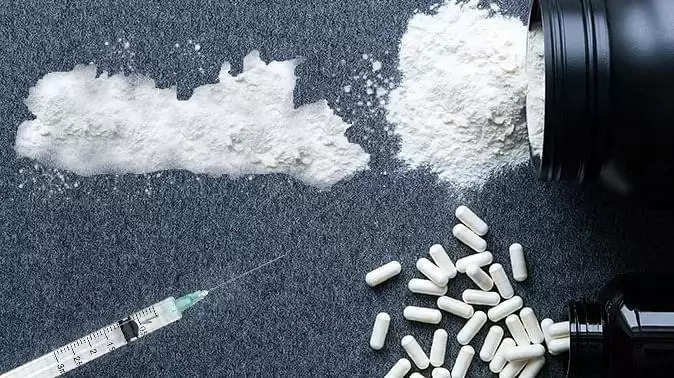Drug Use in Meghalaya: What’s Next?

The use of various psychoactive substances such as alcohol, cannabis and opioids has been observed in India and even in Northeast India for centuries. But in recent times, more people have become aware of harder substances with quicker and more intense ‘highs’. Typically, these are more drugs that are addictive and are injectable. Notable examples would be heroin, cocaine, and crystal methamphetamine.
In Meghalaya and Northeast India, they are more recent phenomena but not an unknown one with conversations swirling around the ‘drug menace’, the ‘rising number of drug addicts in the cities’ and so on becoming more common. The questions that then comes to mind – how serious is the drug problem for us? Should we be concerned?
More recent research on drug use and its associated problems have shown that the problem lies deeper than the surface.
Following the introduction of heroin (locally known as ‘white sugar’, ‘number 4’ or ‘puria’) in Northeast India in the 1970s, drug use in the region began to take a more serious turn in the region as compared to the traditional tradition of cannabis and opium use. It is heroin use that is most concerning for the state of Meghalaya as well. As per the Magnitude of Substance Use in India 2019, opioid use (heroin being the most common) is at 6.34 per cent in Meghalaya in terms of percentage of the population.
ALSO READ:
Also Read: How Civil Society Matters: Public Policy in context of Child Well-being in Meghalaya
On a similar vein, the most concerning revelation comes from the assessment of patterns and profiles of substance use among children in India. A 2013 study by the National Commission for Protection of Child Rights (NCPCR) indicates that Meghalaya had the highest proportion of child heroin users (27.3 per cent).
Drug use and drug addiction have had a clear linkage to increased and wide-ranging health concerns such as cardiovascular disease, stroke, cancer, HIV/AIDS, Hepatitis B and C, lung disease and mental health problems/disorders.
From a security point of view, drug trafficking is considered to be the largest international crime in the world deeply connected to other categories of transnational crime such as money laundering, illegal immigration, human trafficking, arms smuggling, narco-terrorism, etc. Many such concerns have come up in Northeast India and, police statistics in Meghalaya have depicted that drug trafficking is gaining ground in the state– evident from the number of seizures made by the police in the last couple of years.
All of these concerns around drug use have been acknowledged by various government authorities already such as through initiatives from the Social Welfare and Home (Police) Departments for awareness, prevention and prohibition of drug use. However, it continues to be a persistent menace for the state as it has slowly emerged as a transit point for the distribution of heroin in the country. There are also several stories of rising numbers of women drug users “whose voices are seldom heard” and to whom help reaches last.
ALSO READ:
Also Read: Unique Meghalaya and its diminishing prestige: What have we forgotten?
Therefore, it has become clear that the problem has become a societal one that requires active and intentional policy responses that include and involve all active stakeholders in all stages of the battle against drugs in the state– prevention, treatment, aftercare, awareness, strengthening of the legal systems, etc.
The recent release of the Meghalaya Drug Abuse Prevention Policy 2020 by the Social Welfare Department and the State-Level Nasha Mukt Bharat Campaign Committee on September 11th 2020 is a positive move towards the same.
Meghalaya is just the second state to have a comprehensive drug policy in place and its main strength is the focus on involving and engaging with all relevant stakeholders (community, parents, teachers, and government departments, NGOs etc.) through a multi-pronged approach of dealing with both the problems of drug trafficking and drug use.
Apart from the usual focus on prevention, treatment, aftercare and awareness; the policy also emphasises on supply reduction strategies, research studies, fast track and special courts, etc. Furthermore, the active police action through hard measures such as seizures and raids as well as soft measures such as awareness programmes adds to the state’s battle towards drug menace.
But as the state enters a new year along with its citizens, it must ensure that its policy does not remain confined to policy on-paper but must effectively implement it as well.
The data points to an evident truth– it is high time to act on the drug threat in Meghalaya.
Bethamehi is currently pursuing her Master's in Public Policy at the National Law School of India University. Her areas of interest include food policy, social justice, indigenous communities and governance. She is also currently associated with the Dellimai Warnongbri Foundation as a Research Analyst.
ALSO WATCH:

















